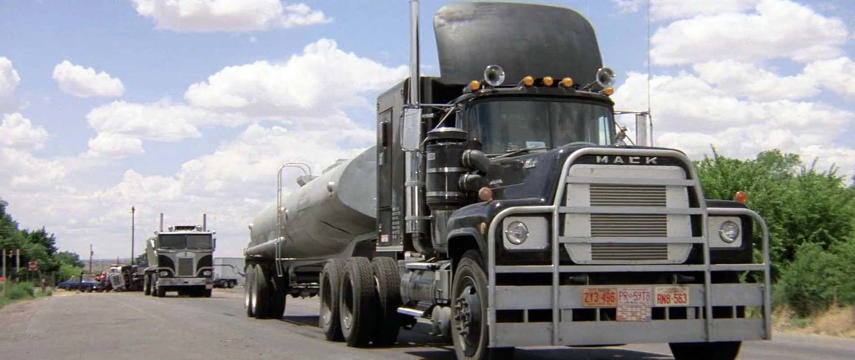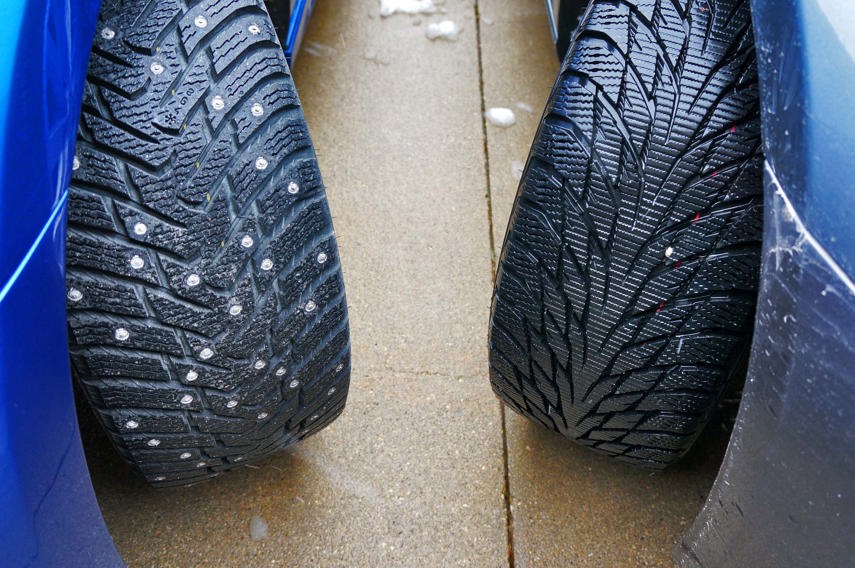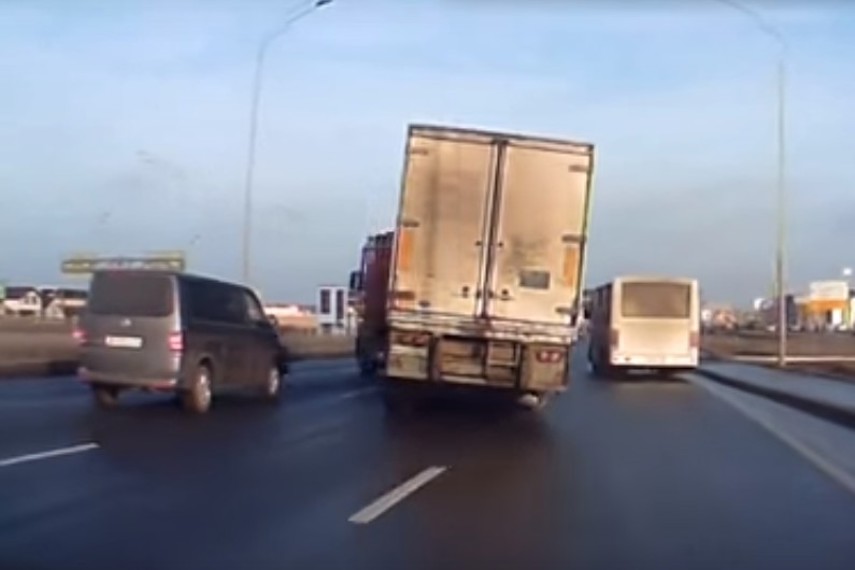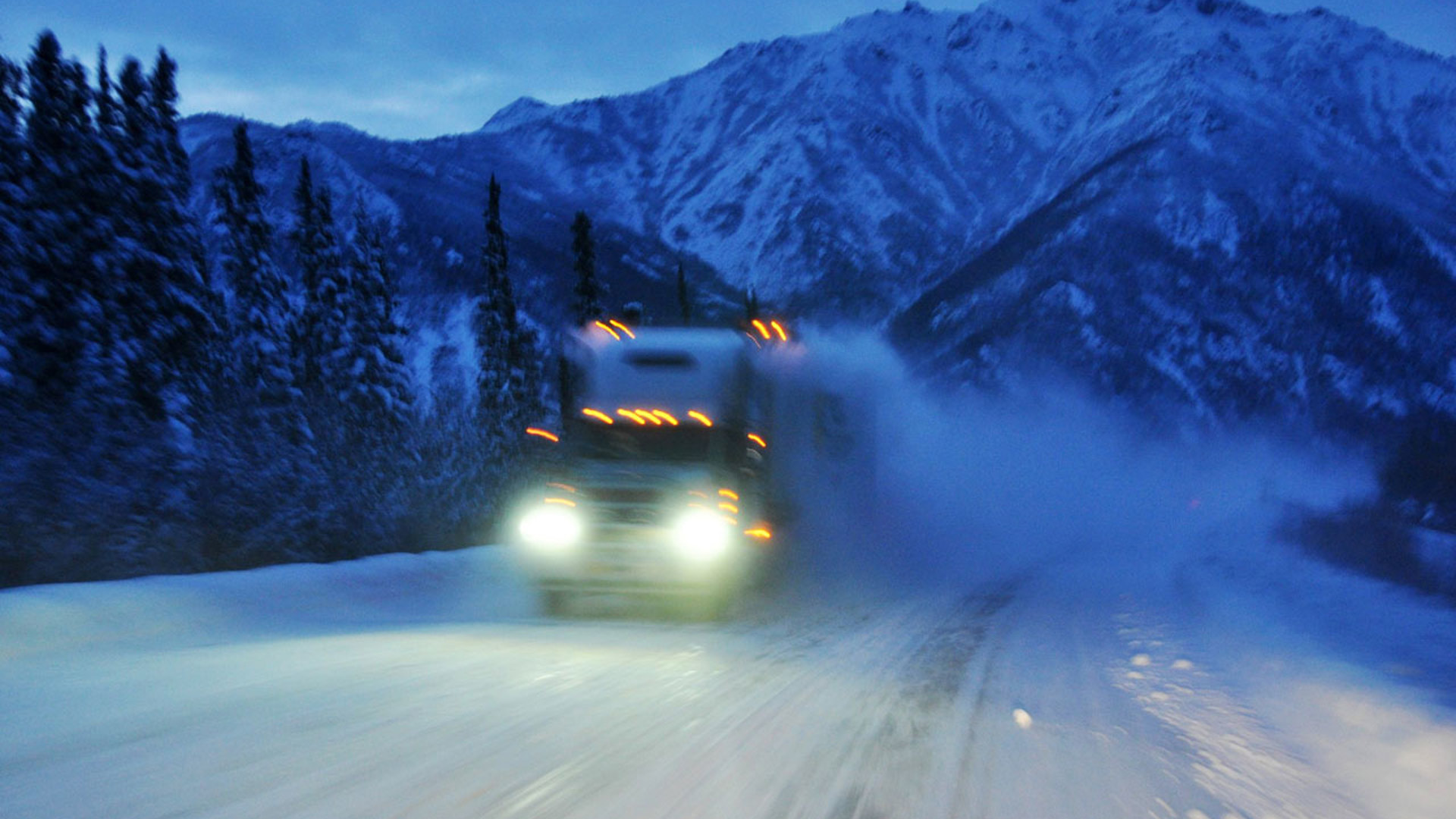For those of us who live in Canada, there’s an inevitability we all have to face: there will be winter weather, and we will sometimes need to drive in it.
Getting around safely in difficult conditions starts with us and our own vehicles, of course, but it also extends outward to properly sharing the road with others. The large vehicles that operate alongside us, such as transport trucks and snowplows, have different safety needs that don’t always perfectly align with the passenger vehicles around them. Being aware of what the drivers of these big rig are thinking about and looking for when working through a blizzard can help you plan how conduct yourself around them and keep everyone going straight with four wheels on the road.
Understanding the physics of a transport truck is a key place to start.
“I think the number one thing passenger car drivers don’t think about is the weight and the physics of a truck,” says Louise Yako, President and CEO of the British Columbia Trucking Association. “It takes a truck much longer to stop and to decelerate than it does a passenger car.”
“Large trucks also have air brakes that take longer to compress and respond than smaller vehicles with hydraulic brakes,” adds Claude Chaulk, a full-time safety professional in the trucking industry. “When a car driver and transport driver hit the brakes at the same moment, the brakes on the truck take a half second longer to activate because air has to compress.
“Driving at 100 km/h, the truck will travel (an extra) 44 feet (13 metres) down the road before the brakes fully respond.”
Because of this delay as well as the added stopping time due to the truck’s weight – which can vary dramatically based on whether the trailer is empty or fully loaded – professional drivers are taught to give themselves an enormous amount of stopping room in front of them as well as room around them for emergency manoeuvres, even more so in inclement weather.

“They want to give themselves plenty of reaction time and try not to have themselves boxed in in traffic,” says Mike Myler, a senior instructor at the Transportation Training Centre at Humber College, one of Ontario’s most respected training facilities. “(They) either move up or back off so they’ve got a little bit of space in the front, on the side, and behind, especially in the wintertime.”
What this adds up to is that a professional transport truck on a snow-covered highway will, whenever possible, sit in the third lane from the left (or second in a four-lane situation), stay far away from other vehicles, and maintain as constant a speed and demeanour as possible.
Inevitably, though, a smaller vehicle comes along with a driver who wants to go faster and execute a pass. This is where things get complicated – and potentially unsafe.
“If a passenger car is going to pass in winter conditions, they need to do that really, really carefully,” Yako explains. “I would encourage passenger car drivers to be patient under those conditions.”
There are four steps a driver can take in these situations to keep everyone involved as safe as possible.

The first is one we hear about all the time: have a winter-safe vehicle to start with. The importance of winter tires cannot be emphasized enough – the increase in grip they provide in snow, ice, and cold temperatures can literally be a life-saver, especially in a maneuvre such as a pass on a transport truck.
“All-season tires do not even come close,” Chaulk says. “You may save a few dollars on [not] purchasing [them], but you may spend the savings on a tow job or worse.
“Before starting out on your trip, check that all snow and ice is removed from your vehicle and your windows are clear,” he adds. “Check that your windshield washer fluid is full, and it’s always a good idea to carry extra.”
When first approaching the truck, ensure that you have the visibility you need to fully execute the pass safely. This has two elements: first, you need a visual connection with the truck driver – if you can’t see his mirrors, he can’t see you – and second, you need to be able to see well past the front of the truck and further down the road to ensure you have the clear space needed to complete the pass.
“Only attempt to pass a truck when you have a long distance of clear, open space in a legal passing zone,” Chaulk says. “If you’re moving at 100 km/h and the tractor-trailer is moving at 80 km/h, you need five or six seconds just to move from bumper to bumper on the tractor-trailer, taking a distance of 500 feet or so.”
Once you’re sure the way is clear, begin to move out and to the left as much as possible – again, without getting close enough to lose sight of the mirrors – and come alongside the truck. Depending on the road conditions, this is when things can start to get hairy.
“Even though there are mud flaps and other things on a truck to try and reduce it, trucks will have greater spray,” Yako says.
If your instinct has always been to stick your foot into the throttle and power through at this stage to be beside the truck for as little time as possible, then you’re right.
“Too slow of a speed when passing can get you caught up in a wind current between the tractor cab and the trailer, making it a dangerous situation,” Chaulk says. “You will need to accelerate to break the wind barrier.”

It’s good to know, though, that a trained driver will be equipped to help if needed.
“Once you’ve made a decision to pass and the professional driver sees your intent, he should already be monitoring the situation ahead and know if you are okay or have made a bad judgment and may need more distance,” Chaulk continues. “A trained professional’s instinct will try to correct another vehicle’s mistake by slowing down to allow a safe pass.”
Once you’re fully clear of the truck, the safest thing to do is to move back over into the right lane. But timing this part of the maneuver correctly is the most important part of completing it safely.
“Cutting off a truck is very dangerous for all road users,” Yako says.
“A recommended minimum distance is a few hundred feet (that’s several football fields) before you begin to pull in front of the truck with your speed slightly above the truck,” Chaulk adds. “This creates a longer safety zone between you and the vehicle behind should an emergency braking occur.”
There’s one more factor in this safety equation, and it’s one the trucking industry has been grappling with for some time. While students have plenty of options for highly professional driver training across Canada, there are also some cheap licensing mills around. These facilities give their students the bare minimum of training required to earn a truck driving licence and not a stitch more, meaning there are inevitably some drivers out there operating these beasts on snow-covered highways with little to no winter driving experience.
Ontario recently implemented mandatory entry-level training to qualify for a Commercial Class A licence that comes effective on July 1, 2017, meaning that only drivers who have completed a program at a community college or registered facility will be able to secure a job in the field. But in the meantime, these mills are still churning drivers out, and the same thing is happening unchecked in other parts of the country.

“We certainly applaud Ontario for introducing the mandatory entry-level training standard,” Yako says. “That’s something we’re trying to achieve here in British Columbia as well, and I know other provincial trucking associations are working toward that. Some schools, regardless of whether there’s a regulation, will have very high standards, and then there are others that do not.”
For now, there’s a case to be made for being mindful of the nature of the truck you’re interacting with as a passenger car driver. Reputable logistics operators will hire reputable drivers, but if the truck nearby seems to be in disrepair, or if there’s a logo on the side that looks temporary or that you don’t recognize, consider that the driver may not be prepared to react as described above and take extra precautions.
“Most of our winter conditions (in BC) are in mountainous and hilly terrain, and that is an issue,” Yako explains. “Those people who achieve the Class 1 test, [and] who haven’t had the type of training that the industry would want them to have, are certainly of concern when they’re out on the road, particularly for their first winter with very little experience. But I would say that at least our members (of the BC Trucking Association) would be very, very careful in terms of dispatching experienced drivers for winter conditions.”
One other major road user drivers are bound to encounter in the winter is snowplows, and Yako says they have a message to send as well.
“One of the things we find car drivers do is pass snowplows when the plows are down,” she says. “Don’t do that. Maintenance contractors train their drivers to pull over when it’s safe to do so to allow any build-up of traffic behind them to pass safely, or they will lift the plow so that there’s no spray when drivers are passing.
“The driver of the snowplow will clearly signal when it’s safe to pass him, and you shouldn’t pass otherwise.”
In British Columbia, the BC Trucking Association is one of a group of safety organizations that has teamed up for an annual campaign called Shift Into Winter that helps educate drivers of all types of vehicles on inclement-weather motoring.
More information on this initiative can be found at shiftintowinter.ca.

